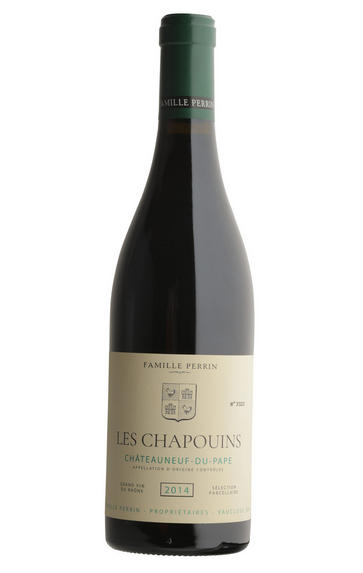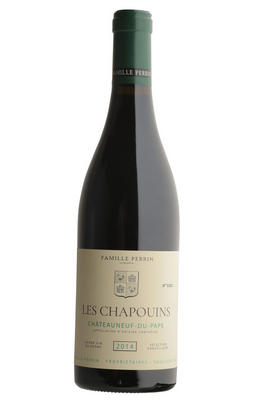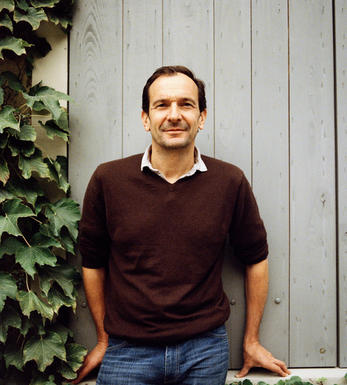
2014 Châteauneuf-du-Pape Rouge, Les Chapouins, Famille Perrin, Rhône

About this WINE

La Famille Perrin
The Domaine Perrin is a négociant brand created in 1997 by François Perrin and his brother Jean-Pierre, Pierre's father, and since 1999 run by Pierre. The Perrin family are owners of the famous Châteauneuf-du-Pape estate Château de Beaucastel.
As with the wines at Beaucastel, the Domaine Perrin wines are impeccably made and reflect the true nature of the terroir from which they come. The wines made are all from the neighbouring Southern Rhône appellations to Châteauneuf-du-Pape, such as Vacqueyras and Gigondas. The reds are based on Grenache, but with other Rhône grape varieties, such as Syrah, Mourvedre and Cinsault.
The Perrins are one of the most reliable wine families in the Rhône valley, truly a name to look out for.

Châteauneuf-du-Pape
The most celebrated village of the Southern Rhône, Châteauneuf-du-Pape is the birthplace of the now indispensable French Appellation d’Origine Contrôlée system – imperfect though it may be. Compared to the Northern Rhône, the vineyards here are relatively flat and often feature the iconic galet pebbles – the precise benefits of which are a source of much debate. Minimum alcohol levels required by the AOC are the highest in France, but at 12.5% it is well below the natural generosity of Grenache, which only achieves its full aromatic potential when it is fully ripe and laden with the resultant high sugars. Syrah and Mourvèdre contribute the other defining elements in the blend, adding pepper, savoury spice and structure to the decadent Grenache. There are a further 10 permitted red grape varieties which can be used to adjust the “seasoning”. Of the five white varieties permitted, it is Grenache Noir’s sibling – predictably perhaps – Grenache Blanc, which dominates, though Roussanne shows a great deal of promise when handled well, notably at Château de Beaucastel.

Southern Rhône Blend
The vast majority of wines from the Southern Rhône are blends. There are 5 main black varieties, although others are used and the most famous wine of the region, Châteauneuf du Pape, can be made from as many as 13 different varieties. Grenache is the most important grape in the southern Rhône - it contributes alcohol, warmth and gentle juicy fruit and is an ideal base wine in the blend. Plantings of Syrah in the southern Rhône have risen dramatically in the last decade and it is an increasingly important component in blends. It rarely attains the heights that it does in the North but adds colour, backbone, tannins and soft ripe fruit to the blend.
The much-maligned Carignan has been on the retreat recently but is still included in many blends - the best old vines can add colour, body and spicy fruits. Cinsault is also backtracking but, if yields are restricted, can produce moderately well-coloured wines adding pleasant-light fruit to red and rosé blends. Finally, Mourvèdre, a grape from Bandol on the Mediterranean coast, has recently become an increasingly significant component of Southern Rhône blends - it often struggles to ripen fully but can add acidity, ripe spicy berry fruits and hints of tobacco to blends.


Buying options
Add to wishlist
Description
This is the Perrin family’s single vineyard Châteauneuf-du-Pape, taken from vines grown on a small (less than one hectare) plot towards the north of the appellation in its namesake lieux-dit of Chapouins. It is a relatively cool site, with clay and limestone soils beneath the traditional galets roulés, and good exposure to winds. This is a blend of Grenache, Mourvèdre and Syrah, vinified in the same way as Ch. de Beaucastel but aged for five years in old oak casks before release.
A rich, delightfully complex nose combines morello cherries and wild strawberries with subtle overtones of kirsch, stewed cranberries, green tea leaves, white pepper, and leather. The palate brings more rich red fruits, plums, a forest floor, and a hint of savoury – it’s a perfect midpoint between maturity and vibrancy. This is drinking beautifully now, paired with most game, poultry, or wild mushroom dishes.
Georgina Haacke, Fine Wine Buyer, Berry Bros. & Rudd (November 2022)
wine at a glance
Delivery and quality guarantee